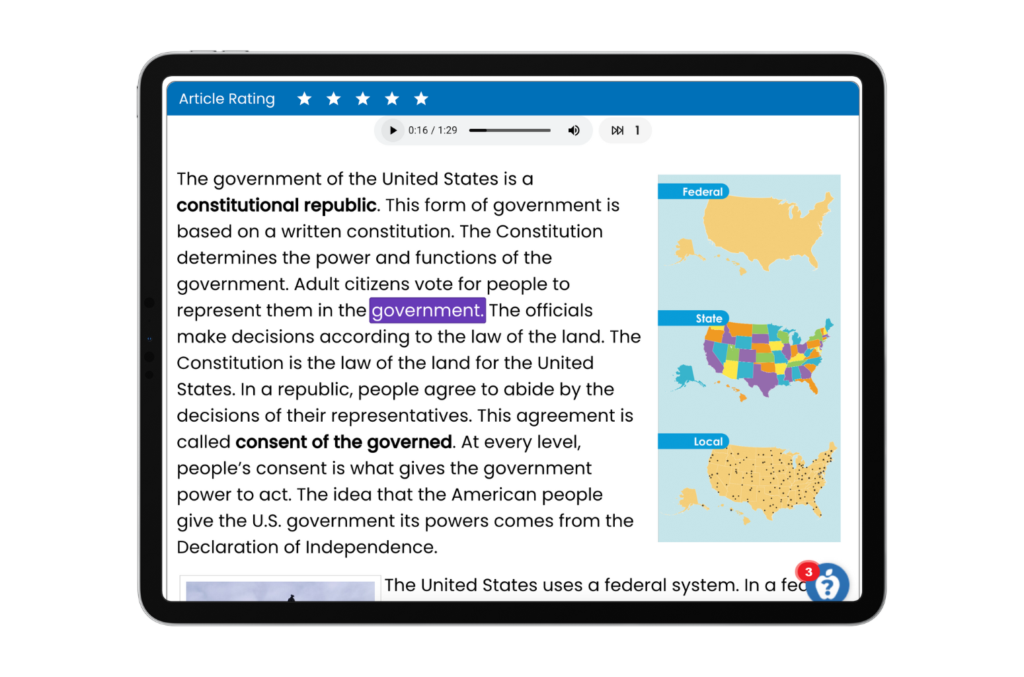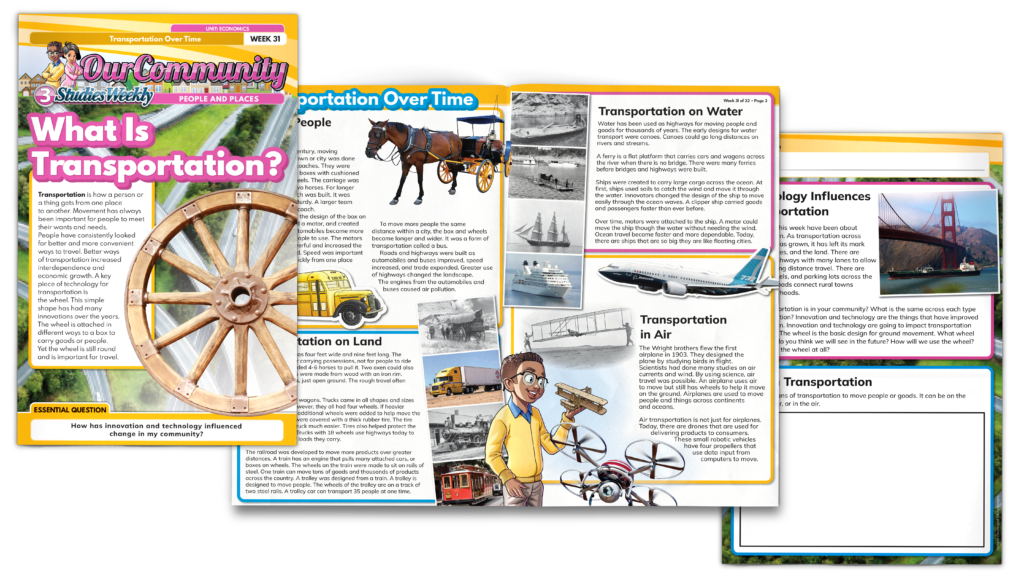
Scaffolding: What is it and Why is it Important?
What is Scaffolding?
One of the greatest satisfactions in life is learning something new or improving one’s skill in a subject. We can see this in the success of college extension programs for retired people. Few of these senior students are trying to build up knowledge for a new career, rather, they attend classes for the joy of learning.
Children have an innate love of learning as well. When they realize that they have “leveled up” a skill or learned something new, they feel innately rewarded. Scaffolding is a research-proven method of leading students along this path.1
As made clear by Fisher, et al. (2023), scaffolding must mimic the end task so that the student can learn to first see tasks modeled, then approximate the task with plenty of supports before the supports are then gradually removed.2
In Studies Weekly, the task of reading grade-level text is modeled with plenty of scaffolding that the student can then use to approximate the task on their own.
Human-recorded audio has synchronized highlighting so that the students can see reading modeled and bring general and domain-specific vocabulary into their oral vocabulary. Increases in vocabulary increase a student’s ability to decode regular and irregular words.3

As literacy scholar Timothy Shannahan has pointed out, strategies such as pre-teaching vocabulary words, providing background knowledge, offering guiding questions, and using targeted discussion all give students the “scaffolding” they need to tackle a word, concept, or sentence structure slightly more difficult than they are used to.4
It is through these small steps that the skillful teacher and well-designed curriculum gradually lead students to higher reading levels.5
Scaffolding up is also effective when it is done in the context of subjects other than reading. Reading improvement is built into texts about various subjects, such as history, science, and social studies.
With this strategy, not only do students feel the satisfaction of improving their skills, but they also learn something new from the texts they are reading6,7.
Scaffolding Up with Studies Weekly
This is the reason Studies Weekly offers so many scaffolding opportunities in its Student Editions and Teacher Editions. Vocabulary words are bolded in the Student Edition, with a definition attached. Foundational concepts are presented at the beginning of a Student Edition and are slowly built upon as it progresses.
The Teacher’s Edition provides background knowledge that they can share with their students as needed, as well as discussion questions and activities that can help students further understand the text. Comprehension questions follow each online article.
These scaffolding strategies help guide students on a path to literacy success. As they build on foundational skills and learn to tackle more difficult skills on their own, they grow in both confidence and ability.

References
1 Timothy Shanahan, “How Complex a Text Can I Scaffold?”, Shanahan on Literacy.
2 Frey, N., Fisher, D., & Almarode, J. (2023). How scaffolding works: A Playbook for Supporting and Releasing Responsibility to Students. Corwin Press.
3 Ouellette, G., & Beers, A. (2010). A not-so-simple view of reading: How oral vocabulary and visual-word recognition complicate the story. Reading and writing, 23, 189-208.
4 Shanahan, “Scaffolding the Reading of Seventh Grade English Learners: How Much Is Too Much?”, Shanahan on Literacy.
5 Shanahan, “How Much Text Complexity Can a Teacher Scaffold?”, Shanahan on Literacy.
6 Shanahan, “Integrating Literacy Instruction with Science and Social Studies,” Shanahan on Literacy.
7 Social Studies Instruction and Reading Comprehension: Evidence from the Early Childhood Longitudinal Study. (n.d.). The Thomas B. Fordham Institute.